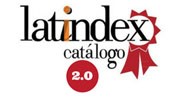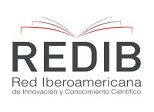Training for the Micro-enterprises of the Popular and Solidarity Economy in Esmeraldas Canton
DOI:
https://doi.org/10.69890/hallazgos21.v3i1.212Keywords:
Training; micro-enterprises; Popular and Solidarity Economy; Esmeraldas.Abstract
The micro-enterprises are the basis of the pyramid of the Popular and Solidarity Economy. Many of them, without necessary technical training, have started their activities. For this study, a training program has been taken as a reference to the Association of Food and Cleaning Services Sazón de Campo "ASAZCAMP", in Esmeraldas, dedicated to the feeding service in the Children's Centers of Buen Vivir (CIBV). The general objective was to implement a training program according to the current need of ASAZCAMP and determine the cost benefit of the training. We worked with qualitative and quantitative techniques to obtain information. The results are based on an analysis of economic, political, environmental and cultural factors, as well as a diagnosis through the application of a SWOT. With this diagnosis of training needs determined, the conceptual analysis was made based on the strengthening of competencies and the application of requirements of state entities such as public purchases and standardized food handling concepts for consumption, as well as knowledge of administration and cooperative work in associations with a view to offering the best services. The training program was evaluated by the participants in the fulfillment of reaction, learning and application or transfer objectives. As a result of these evaluations, participants rated the Food Handling course as the largest contribution, with an influence percentage of 38.5%. An important contribution of this research is the quantification of the impact of training, obtaining as a result a cost / benefit ratio of 1.28 dollars of the investment in training.
References
Araujo, C., López-Boo, F., Novella, R., & Schodt, S. (2015). La calidad de los centros infantiles del Buen Vivir en Ecuador. Washigton: Banco Interamericano de Desarrollo.
ASAZCAMP. (2013). Estatutos.
Barbazette, J. (2006). Training needsassessment: Methods, tools and techniques. En J. Barbazette, Training needsassessment: Methods, tools and techniques. San Francisco: CA: Pfeiffer.
Cano, E. (2011). El proceso de enseñanza-aprendizaje por competencias - programa de las mejora e innovación dela Docencia. Zaragoza: ICE Zaragoza.
Carnota, L. O. (1987). Téoria y práctica de la dirección socialista. Habana: Universida de la Habana.
CENTRO OPERATIVO ESMERALDAS, SECAP. (2012). Informe de Ejecución en Convenio con Eptermoesmeraldas. Esmeraldas.
Chance, P. (1998). First course in applied behavior analysis. Long Grove: Waveland Press.
Eddy, E. (2003). Transfer in an e-learning. San Francisco: Jossey-Bass.
Gaines, D., y Robinson, J. (. (2008). En Performance consulting: A practical guide for HR and learning professionals. San Francisco: CA: Berrett-Koehler Publishers.
Hollton, I., & Baldwin, T. (2003). Making transfer happen: An actionperspective on learning transfer systems. San Francisco: Jossey-Bass.
Kirkpatrick, D., y Kirkpatrick, J. (2006). En (2006, third edition). Evaluating training programs: The four levels. San Francisco,: Berrett-Koehler Publishers.
Leibowincz, J. (Marzo de 2011). Metodologia para diseñar estrategias de capacitación. Obtenido de Metodologia para diseñar estrategias de capacitación: http://guia.oitcinterfor.org/sites/default/files/conocimientos/oitcinterfor_guia-capacitacion-tic-mipyme_esp.pdf
Lovoleck, C. (2004). Administración de servicios , estrategias de marketing,operaciones y RRHH. Mexico: Pearson Educación.
MacCain, D. (2005). Evaluación básica. Alejandria: ASTD Press.
Mager, R. (. (1999). En What every manager should know about training. Atlanta, Georgia: CEP Press.
Mager, R. (1997ª, 1997b). Prepareng instructional objetives: Critical tool in the development of effective instruction; Measurin Intructional objetives hab been acchieved. Atlanta: The Center for Effective Performance.
Mager, R. (1999). En (1999, second edition). What every manager should know about training. Atlanta: CEP Press.
MASLOW, A. (5 de SEPTIMEBRE de 1969). EL PAPEL DEL EMPRENDIENTO . Obtenido de http://www.scielo.org.co/scielo.php?pid=S0120-46452014000100010&script=sci_arttext&tlng=en
Phillips, J., y Phillips, P. (2005). Return on investment basics. Alexandria: ASTD Press.
Phillips, J., y Phillips, P. (2008). En Beyond learning objectives: Develop measurable objectives that link to the bottom line. Alexandria : ASTD Press.
Piskurich, G. (. (2002). En HPI essentials: A just-the-facts, bottom-line primer on human performance improvement. Alexandria: VA: ASTD Press.
Publica, S. d. (2008). CONALEP. Mexico.
Rodríguez, A. (1985). Psicología social. México: Editorial Trillas.
República del Ecuador, Constitución 2008. Quito
República del Ecuador. Ley de la Economía Popular y Solidaria. Obtenido de http://www.economiasolidaria.org/files/Ley_de_la_economia_popular_y_solidaria_ecuador.pdf
Salkind, N. (2004). Statistics for people who think they hate statistcs. Thousand Oaks, CA Sage Publications.
SECAP, S. E. (2004). Gerencia de la Estategia de Mejoramiento del Talento Humano de los Servicios de Desarrollo Infantil Integral. Quito.
SENPLADES. (2013). Plan Nacional para el Buen Vivir 2013 - 2017. Quito.
Solidaria, S. d. (07 de Julio de 2016). Boletin de Conyuntura No 1. Obtenido de ttp://www.seps.gob.ec/documents/20181/26626/El%20sector%20econ%C3%B3mico%20popular%20y%20solidario%20en%20Ecuador%20final.pdf/ac0cded6-d7bc-4fb7-8c6a-46e9010aa4c8
Soliz, E., & Escobar, R. (2008). Guia metodologica de capacitación. En E. Soliz, & R. Escobar, Guia metodologica de capacitación (págs. 03-20). Lima: Soluciones Prácticas.
STAHL, J. (2002). Taller de capacitación. En conceptos, tecnica, métodos para profesionalizar el trabajo (págs. 30-41). QUITO: ABYA YALA.
Thompson, A., & Strikland, A. (1998). Administració Estratégica. Obtenido de http://www.lectura-online.net/libro/administracion-estrategica-thompson-pdf-6.html
Tobey, D. (2005). Alexandria: VA: ASTD Pres.
Downloads
Published
How to Cite
Issue
Section
License
Los artículos enviados a la Revista Científica Hallazgos21 deberán ser totalmente originales e inéditos.
Los autores son los responsables de los textos y las imágenes incluidas en los artículos y no necesariamente reflejan el pensamiento de la editorial o de la Pontificia Universidad Católica del Ecuador, Sede Esmeraldas (PUCESE).
Los autores disponen cederle a la Revista Científica Hallazgos21 todos los derechos inherentes para la edición, publicación y distribución o divulgación del mismo.
Se autoriza a las revistas firmantes de los acuerdos de Encuentros de Revistas Latinoamericanas para reproducir en parte o totalmente los artículos con la sola mención de la fuente claramente señalada.







